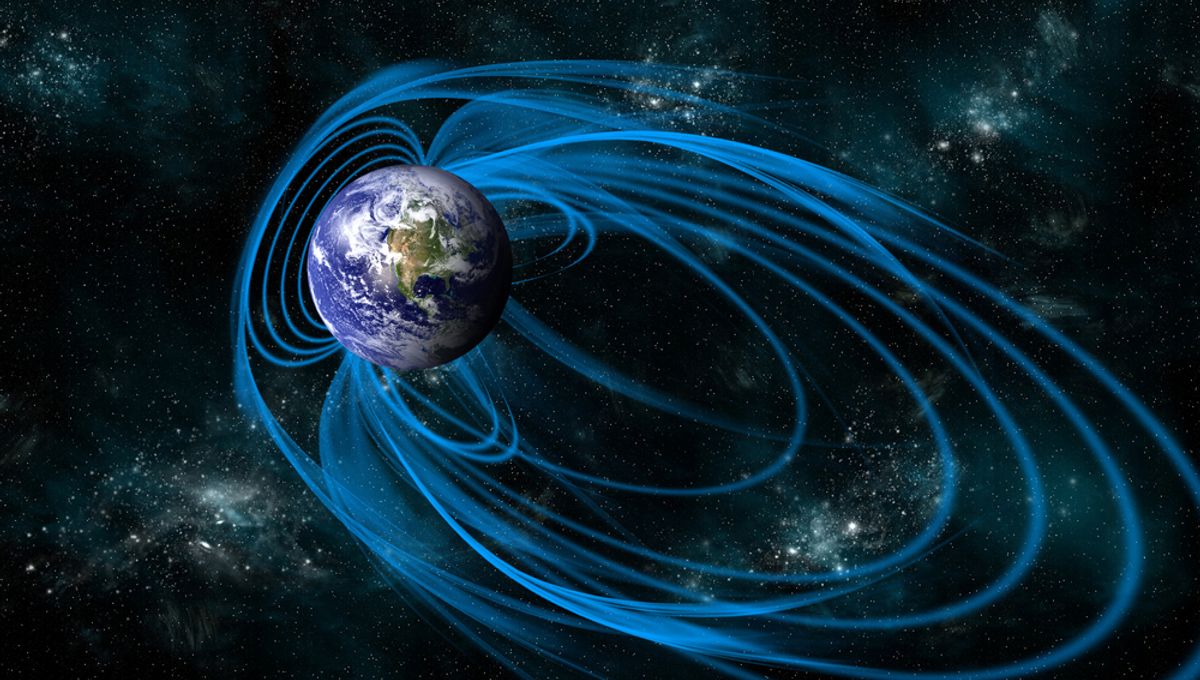
It’s easy to think of Earth’s geomagnetic poles as features that are set in stone (or ice), but both poles are not stationary and remain in a permanent state of flux. Since it was first documented by scientists in the 1830s, the North Magnetic Pole has wandered some 2,250 kilometers (1,400 miles) across the upper stretches of the Northern Hemisphere from Canada towards Siberia. Between 1990 and 2005, the rate of this movement accelerated from less than 15 kilometers per year to around 50 to 60 kilometers per year.
A study, published in the journal Nature Geoscience, argues the changes could be explained by the to-ing and fro-ing between two magnetic “blobs” of molten material in the planet’s interior, causing a titanic shift of its magnetic field.
The North Magnetic Pole is the point at which Earth’s magnetic field points vertically downwards, dictated by molten iron that’s sloshing around Earth’s interior through convection currents. The recent shift towards Siberia, it seems, is caused by a blip in the pattern of flow in Earth’s interior that occurred between 1970 and 1999. The change resulted in the Canadian blob becoming elongated and losing its influence on the magnetosphere, causing the pole to zoom toward Siberia.
“What we’ve discovered is that the North Magnetic Pole’s position is controlled by two patches of magnetic field – one underneath Canada and one underneath Siberia – and they act as a tug of war effect controlling the location of the pole,” Dr Phil Livermore, lead study author from the School of Earth and Environment at the University of Leeds in the UK, explained to BBC Radio 4’s Today program.
“Now historically, the Canadian patch has been winning the war and that’s why the pole has been centered over Canada but in the last few decades, the Canadian patch has weakened and the Siberian patch has strengthened slightly,” he added.
“That explains why the pole has suddenly accelerated away from its historical position.”
The researchers reached this conclusion using data gathered by the European Space Agency’s (ESA) Swarm satellites. This trio of satellites orbit Earth and precisely measure the magnetic signals that stem from our planet’s core, mantle, crust, and oceans, as well as from the ionosphere and magnetosphere. Keeping an eye on Earth’s magnetic field isn’t just important for abstract scientific studies; the magnetic field serves as a shield of geomagnetic energy that protects Earth from destructive solar radiation. It is also imperative for many navigation systems, from the humble compass to GPS.
Source Link: Earth's North Magnetic Pole Is Heading Towards Siberia – And Now We Know Why